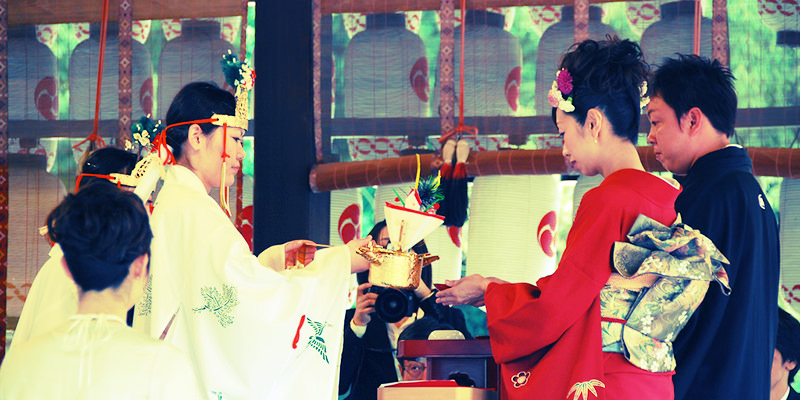Over the years, various religions have had booze hangups. While religions like Judaism place an emphasis on the importance of wine and other drugs, other religions are anti-alcohol. The same goes for sex and virginity: the two intertwined topics are long discussed and debated, with many traditional religions concluding the same thing – abstaining before marriage is a good thing. But what if we told you there was a religious tradition that involved both alcohol and sex – or the lack thereof?
A group virgin drinking ritual sounds odd, maybe even a little perverted, but sure enough, it once existed, and it involved sake.
In Amerispeak, sake is known colloquially as ‘rice wine,’ but the truth is that it’s much closer to beer, having never been distilled and only brewed. Sake, now enjoyed by college students in the infamous form of sake bombs, actually plays an important role in the Japanese religion Shinto. For instance, upon entering a holy shrine, a person has to undergo a purification ritual. Along with some other innocuous purifying elements you might expect, like water and sand, sake is on the list. Sake is also exchanged by couples at traditional Shinto weddings to seal their wedding vows. These are but a few examples, but they share a common theme: sake is holy and spiritually ‘clean.’ Even when it’s being used in a marriage ceremony, it seems to imply that because the bride and groom are together now, whatever copulation comes next is religiously a-go.

So, it’s no wonder that because of sake’s spiritual significance, only virgins were trusted to chew sake rice up and get it ready for fermentation.
I’ll back up.
Today, we take for granted the fact that we have handy tools available to mash grain and brewer’s yeast to break down sugars so they can be converted into alcohol. Cut back to sake’s debut some 2,500 years ago, and these tools of the trade weren’t as widely available. The solution? Your mouth. Kuchikami no sake, which translates to “chewing-in-the-mouth-sake,” was the product of a bunch of people chewing rice grains and spitting them into a big wooden vat. There, the masticated rice sat to brew for a few days. The enzymes in saliva helped turn starch into glucose, and yeasts living in the air transformed that glucose into alcohol. The result was a kind of solid, sake paste that was eaten as opposed to drank.
After awhile, the whole spitting game became incorporated into Shinto religious festivals. The responsibility was given to young virgins, who were regarded as holy mediums, and the sake became known as bijinshu – “beautiful woman sake.” If that phrase creeps you out, well…you’re not alone.
Eventually, probably due to mechanical innovations, health regulations, and pissed off virgins, the practice fell out of favor. The sake we enjoy today is far from the “chewing-in-the-mouth-sake” created ages ago. Still, you have to give credit to the creativity at hand. Though the whole spit and brew thing might seem bizarre, it was actually a lot more practical and purposeful than some of the religious customs widely practiced today. Go figure.
Header image via Ashley Van Haeften / Flickr

